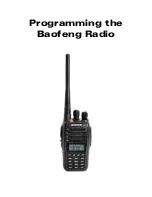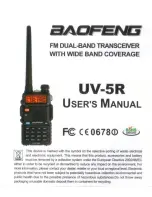
S R A / S F X 2 1 0 0 S E R I E S S A T E L L I T E R E C E I V E R
159
Column/Field Description
PID Mode
Selecting this mode allows only the PID(s) listed to be output on
the ASI Port. Typically, this PID List would be some subset of the
whole MPEG2 Transport Stream (TS). If this mode is selected,
Transport Stream Mode cannot be selected, hence the radio
button. For example, this mode would be very useful for
connecting external video decoding equipment.
Transport
Stream Mode
Selecting this mode allows the whole MPEG2 TS, as received
from the satellite carrier, to be output on the ASI Port. If this
mode is selected, all the individual PID information in the list is not
used, because all PIDs in the TS are being output. For example,
this mode would be useful for multi-hop applications where the
whole TS has to be broadcast onto another satellite.
PID Type
This column displays the type of PID, based on which PID List it is
located in, whether that is Net, Async, Sync, Other. Remember
that the Cyphercast (option) ECM/EMM PID stream is of type Net
PID.
Enabled
This column displays the enable/disable status of each PID, as
setup under the appropriate PID List elsewhere.
Route to ASI
Check boxes in this column indicate that the PID(s) are being
routed to the ASI port. In this list, all PIDs should have this box
checked, otherwise they wouldn’t appear in the list. This column
is mainly provided as a means to remove PIDs from being routed
to the ASI Port. However, doing so does not remove the PID
altogether from its corresponding PID List (based on type). You
can go back to the appropriate PID List and reroute the PID to the
ASI Port.
PID Rate
This column displays the bit rate of the PID, if it is of type Async
or Sync.
NOTE:
Deleting a PID
from the ASI Port
List using Delete
Selected and
Send Update for
example, will also
remove the PID
permanently from
its corresponding
PID List (based on
type).
















































